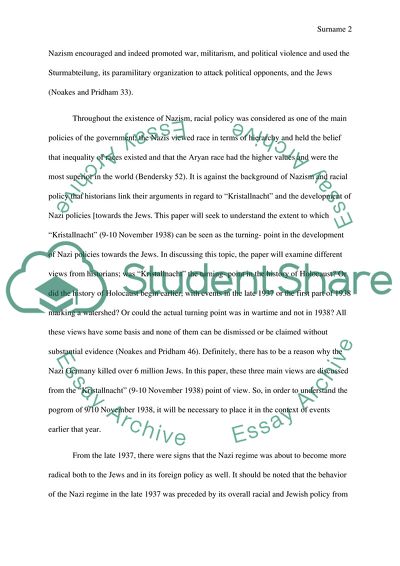Cite this document
(Kristallnacht as the Turning-Point in the Development of Nazi Policies Research Paper, n.d.)
Kristallnacht as the Turning-Point in the Development of Nazi Policies Research Paper. Retrieved from https://studentshare.org/history/1767396-to-what-extent-should-kristallnacht-9-10-november-1938-be-seen-as-the-turning-point-in-the-development-of-nazi-policies-towards-the-jews
Kristallnacht as the Turning-Point in the Development of Nazi Policies Research Paper. Retrieved from https://studentshare.org/history/1767396-to-what-extent-should-kristallnacht-9-10-november-1938-be-seen-as-the-turning-point-in-the-development-of-nazi-policies-towards-the-jews
(Kristallnacht As the Turning-Point in the Development of Nazi Policies Research Paper)
Kristallnacht As the Turning-Point in the Development of Nazi Policies Research Paper. https://studentshare.org/history/1767396-to-what-extent-should-kristallnacht-9-10-november-1938-be-seen-as-the-turning-point-in-the-development-of-nazi-policies-towards-the-jews.
Kristallnacht As the Turning-Point in the Development of Nazi Policies Research Paper. https://studentshare.org/history/1767396-to-what-extent-should-kristallnacht-9-10-november-1938-be-seen-as-the-turning-point-in-the-development-of-nazi-policies-towards-the-jews.
“Kristallnacht As the Turning-Point in the Development of Nazi Policies Research Paper”, n.d. https://studentshare.org/history/1767396-to-what-extent-should-kristallnacht-9-10-november-1938-be-seen-as-the-turning-point-in-the-development-of-nazi-policies-towards-the-jews.


